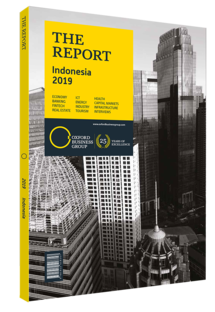Dian Siswarini, President Director and CEO, XL Axiata: Interview

Interview: Dian Siswarini
What regions offer the most potential for telecoms operators outside Greater Jakarta?
DIAN SISWARINI: Java grows at roughly the same pace as the Greater Jakarta region. Cities such as Bandung and Surabaya are emerging as key centres on Indonesia’s main island. However, the regions that offer the highest growth potential are actually located outside of Java. This is why operators are increasingly focused on expanding to other areas, primarily Sumatra and Sulawesi. In these provinces, commodities are the main driver of local economic growth. For the last few years operators have been investing in these provinces and we have thus seen double-digit growth for telecoms operators in these areas. In Java there are five main operators but, outside of Java, Telkomsel remains the main player. The remaining four operators need to expand their network and increase marketing and sales efforts to emerge as challengers to Telkomsel both outside and within Java. The expansion of these operators will help to change the preconception that operators must be Java-based to be national players.
The market relies on traditional means of distribution, which is why we seek to increase the use of modern and digital channels. There are many opportunities for synergy in terms of payments and data processing to create insights for telecoms operators. Operators have collated their own data on usage patterns and mobility, but players in other industries, such as e-commerce, possess data on spending power. It would be mutually beneficial if they were to combine this data.
To what extent is Indonesia equipped with the ICT skills needed to compete in the digital era, and what areas still require development?
SISWARINI: Indonesia still lags behind in terms of the ICT skills of its workforce. Experience in data analytics in particular is still scarce in the market. Ultimately, the telecoms segment is all about data. The problem is that the curriculum in Indonesia has not developed as fast as in other countries, creating a gap between the digital literacy level and the requirements of the industry. For example, the current science and technology curriculum has not undergone any considerable change in many years. While programming languages taught in countries such as Australia have kept pace with industry needs, the Indonesian curriculum still focuses primarily on languages such as Java or C, which are now less commonly used.
How can Indonesia narrow the persistent rural-urban divide in its ICT infrastructure?
SISWARINI: The government still does not allow operators to share networks. If this were enabled, the sector would see healthier levels of competition. For example, the western and central parts of the Palapa fibre-optic project were already inaugurated in early 2018. However, the main barrier to fully completing the project is that investors are required to build broadband networks and to have equipment on-site to link the fibre optics across islands. Since some islands require towers, network sharing would eventually enable higher connectivity. The development of infrastructure to improve broadband penetration is still in its early stages. Data services remain the key growth driver for the sector as a whole, but operators are now looking to the business-to-business segment, especially among small and medium-sized enterprises.
How do the consumer and business segments differ in terms of margin pressures and competition?
SISWARINI: The consumer segment is considerably more competitive than the business segment, particularly in comparison to neighbouring countries such as Singapore or Thailand. On the business side, there is less competition because our margins are lower. Larger enterprises are more concerned about cutting costs, and not as willing to pay. As a result, margin pressures are considerably higher for the business segment.
You have reached the limit of premium articles you can view for free.
Choose from the options below to purchase print or digital editions of our Reports. You can also purchase a website subscription giving you unlimited access to all of our Reports online for 12 months.
If you have already purchased this Report or have a website subscription, please login to continue.

